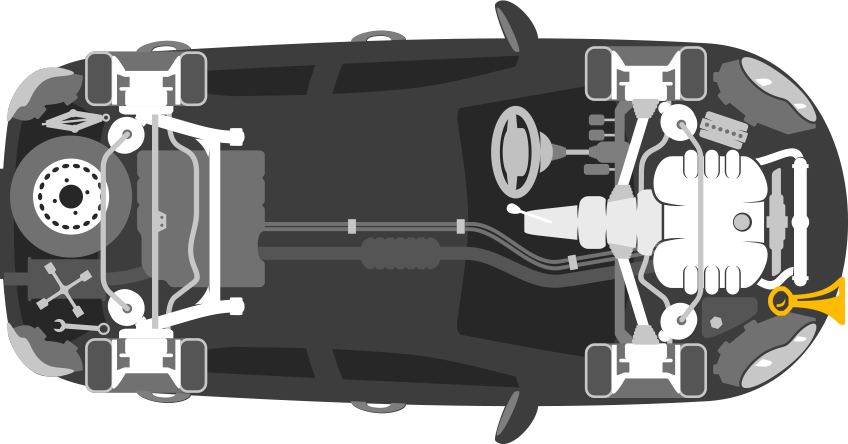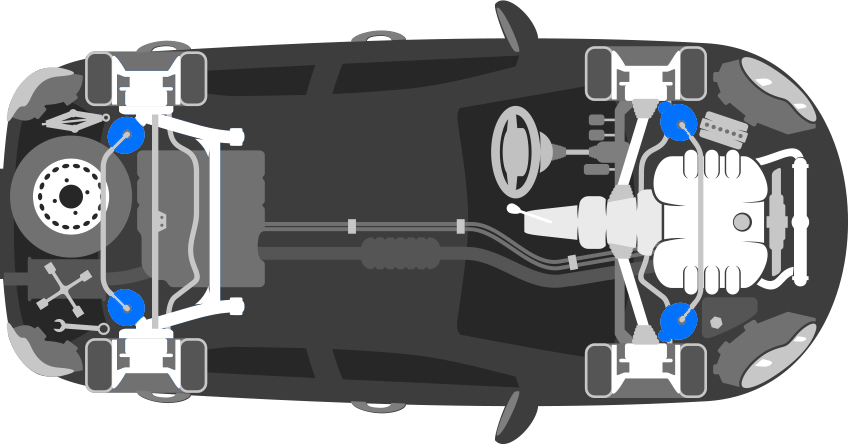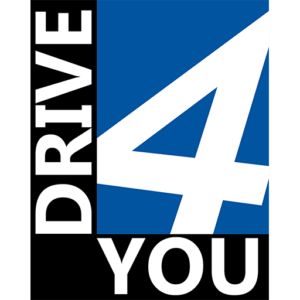THE PRACTICAL TEST
USE MENU OR SCROLL DOWN
☰ MENU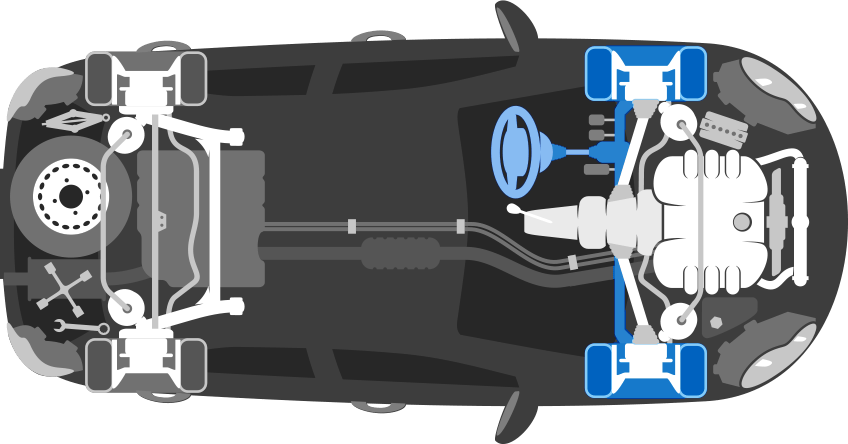
You must be able to check whether the following conditions of the control unit are met:
There should normally be no wheel play. This means that the wheels must immediately follow the movement of the steering wheel. In cars with power steering, the check is done with the engine running. The vast majority of cars HAVE power steering. Move the steering wheel a little from side to side and see if the wheels follow the movement of the steering wheel.
The fluid level in any power steering reservoir must comply with the vehicle manufacturer's instructions. This is checked either by the fluid level being between the min. - and max. mark or that the indicator light is not lit. The power steering reservoir is located in the engine compartment.
The video is with English subtitles.
In addition, you need to know the following about steering, but this is not included in the practical driving test:
- The steering system must be designed so that the vehicle can be steered easily, safely and quickly.
- There must be no significant play in the steering system as a whole or in its individual parts due to wear or similar.
- When driving at low speeds, the steering wheel should turn easily from side to side without encountering uneven resistance or causing noise.
- Heavy or difficult steering can be caused by a lack of fluid in the power steering reservoir, a worn or broken power steering drive belt or a fault in the electric power steering system.
- If the wheels do not immediately follow the movements of the steering wheel, this could be a sign of play in the steering linkages.
- The steering unit should be inspected if there is too little fluid in the power steering system or if there is significant steering wheel play.
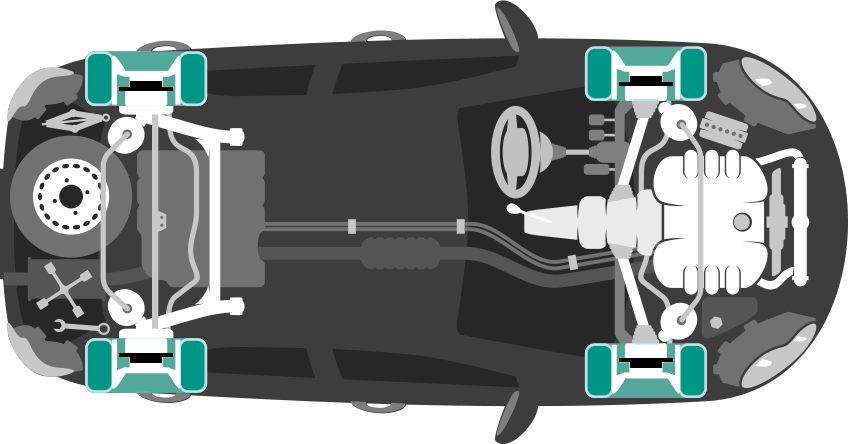
You must be able to check whether the following brake conditions are met:
The brake pedal must not be able to be depressed when the pedal is pressed hard, but how far it goes down before it becomes hard and firm depends on the make of car.
The brake pedal should not normally sink while it is kept depressed at a constant pressure.
Many cars have a vacuum booster/brake booster. It is checked by stepping on and off the brake pedal a few times. Then start the engine while keeping the brake pedal depressed and let the pedal sink a little.
There must be no lack of fluid in the brake fluid reservoir. Check that the level is between the min. - and max. mark or that the indicator light is not lit.
The video is with English subtitles.
In addition, you need to know the following about the braking system, but this is not part of the practical driving test:
- The service brake must work on all wheels and be able to brake the vehicle safely, quickly and effectively at all speeds and loads.
- The parking brake must be able to keep the car stopped on an inclined road.
- If the car skids during light braking on a level road, this indicates a fault in the braking system or moisture or dirt on the brake pads. Moisture can get into the brakes during a car wash, for example, but will disappear after a short period of braking.
- Uneven braking or sudden chopping from one or more wheels indicates a fault in the brake drums, brake discs or brake pads.
- If the brake pedal can suddenly be depressed further than usual, it is a sign that one of the brake circuits is defective.
- Warping of the car during light braking on a level road is a sign of a fault.
- Uneven braking or sudden chopping from one or more wheels is a sign of a fault.
- Brakes should be checked immediately if there is too little brake fluid in the brake fluid reservoir, if the indicator light comes on while driving, if the brake pedal can be depressed further than normal, or if braking is uneven or the car pulls to the side while braking.
- If the indicator light for the ABS braking system does not go out shortly after starting, this indicates a fault in the ABS braking system and only driving to the nearest workshop is permitted.
- The ESC system is equipped with an indicator light. If this is constantly lit, there may be a fault in the ESC system and the vehicle manufacturer's instructions must be followed.
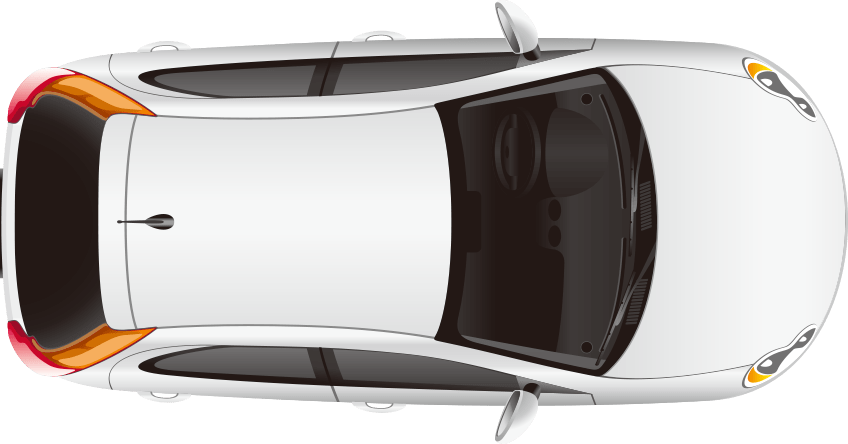
You must be able to check whether the following requirements for mandatory lights and reflectors are met:
All lights and reflectors must be intact and clean, and all lights must be able to illuminate.
The dipped beam must not dazzle (judging by the upper edge of the light border falling 1 cm per metre). Stand in front of the car with the dipped beam switched on, place a finger where the light cone hits your leg. Then step back 1 metre and the light cone should hit your leg 1 cm further down.
Stop lights should provide significantly more light than tail lights. Have someone else step on the brake pedal while you check the lights.
The indicators must flash a yellow light that is clearly visible in sunlight.
The hazard flasher (emergency flasher) must be able to switch on all indicators simultaneously.
Licence plate lights must have a white light that can illuminate the rear licence plate.
Lights in a pair of lights must have the same colour and brightness.
The video is with English subtitles.
In addition, you need to know the following about lights and reflectors, but this is not part of the practical driving test:
- The vehicle may only be equipped with mandatory or authorised lights and reflectors.
- Mandatory lights and reflectors include:
- two headlights with high beam,
two lights with asymmetric low beam,
two lights with position light,
two lights with rear lights,
three lights with stop lights (older cars may only need two stop lights),
at least one number plate light,
two indicators at the front and rear of the car and one on each side of the car; and
two red approved and labelled rearward-facing reflectors (must not be triangular).
The high beam (long beam) of the headlights must be able to illuminate the road at least 100 metres in front of the vehicle, the low beam must be able to illuminate the road at least 30 metres in front of the vehicle without dazzling, and the position light must be clearly visible at a distance of at least 300 metres without dazzling. - All lights and reflectors must be intact, clean and undamaged.
- Headlights should be white or yellowish in colour.
- Bulbs must be correctly fitted.
- The rear lights must be red.
- Cars longer than 6 metres must be equipped with approved and labelled amber side reflectors and side marker lights, which must be distributed on the sides of the car.
- If the indicators are flashing significantly faster than usual, this is usually a sign that one or more indicators are not working.
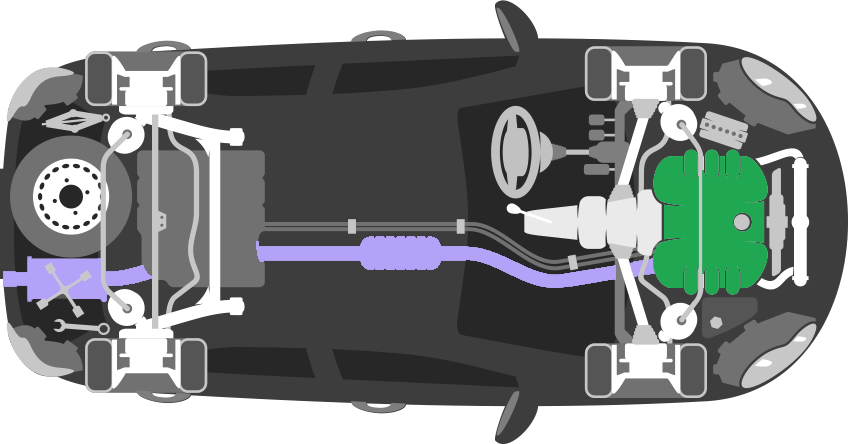
You must be able to check whether the following requirements for the engine and exhaust system are met:
The engine must not produce unnecessary smoke and noise. Start the engine and check it.
The exhaust system must be tight and secure. If there is a lot of noise, it indicates a leaky exhaust system. Check under the car to see if the exhaust system is stuck.
Engine oil must be filled in sufficient quantity, as measured by the dipstick's max. - and min. -marks on the dipstick, read on the vehicle's instruments or according to the instructions in the owner's manual.
Coolant must be filled in sufficient quantity according to the instructions in the owner's manual. There is usually a min/max mark on the container in the engine compartment.
In the engine compartment you'll also find the sprinkler fluid container. There should be enough for the next journey. You can see this either directly on the reservoir or there is a warning in the dashboard if the reservoir is running low.
The video is with English subtitles.
In addition, you need to know the following about the engine and exhaust system, but this is not part of the practical driving test:
- Leaks in the exhaust system or driving with the tailgate open can cause carbon monoxide, which is odourless and dangerous even in small amounts, to enter the car.
- Too little oil in the engine or too little water in the cooling system can damage the engine.
- Black exhaust smoke indicates poor combustion and is a sign of a fault.
- Abnormal noise when accelerating indicates a fault in the exhaust system.
- Engine acceleration without increasing speed while driving indicates a faulty clutch.
- Difficult gear shifting with loud noises indicates a faulty gear or clutch.
- Slow movement of the car in 1st gear, even when the clutch pedal is depressed, indicates a faulty clutch.
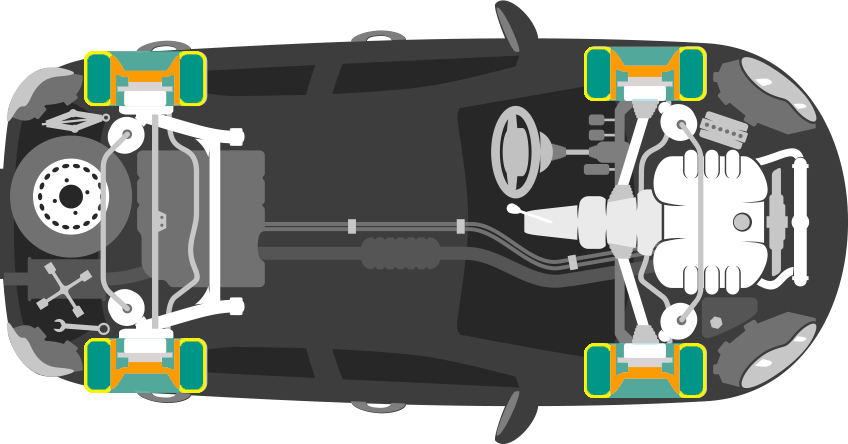
You must be able to check whether the following requirements for tyres and rims are met:
Tyres should have at least 1.6 mm depth in the main tread on all wheels. The easiest way to judge this is by the wear indicators.
Tyres and rims must be undamaged.
The video is with English subtitles.
In addition, you need to know the following about tyres and rims, but this is not part of the practical driving test:
Passenger cars with a maximum permitted total weight of 3,500 kg and vans with a maximum permitted total weight of 3,000 kg must be fitted with the same type of tyres on all wheels, except for emergency spare tyres.
Tyres are divided into types depending on:
a) build:
i) radial tyres
ii) bias tyres.
b) application category:
i) plain tyre (without "M+S" labelling)
ii) off-road and winter tyres (with "M+S" labelling)
(iii) tyres for temporary use (emergency spare wheel).
The tyre inflation pressure must be in accordance with the vehicle manufacturer's specifications.
Uneven/skewed tyre wear indicates a fault.
Abnormal tendency to oversteer or understeer the car - i.e. the car turns in a sharper or softer arc than what should correspond to the steering wheel rotation - or increased sensitivity to crosswinds indicates incorrect tyre pressure.
Creaking noises while driving can indicate a faulty suspension system, including springs or shock absorbers.
Uneven/skewed tyre wear indicates a faulty tyre pressure, wheel or wheel alignment, brakes or shock absorbers.
Abnormal noise or shaking from wheel bearings or suspension can be a sign of a fault.
Uneven/skewed tyre wear can be a sign of various vehicle faults. These faults must be rectified immediately.
Incorrect tyre pressure can manifest itself as uneven/skewed tyre wear, skewing under light braking or abnormal oversteer and understeer and should be addressed immediately.

You must be able to control the following specialised equipment:
Sprinkler fluid must be filled in sufficient quantity. A sufficient amount means that there is enough for your intended journey so that you can clean your windscreen at any time. This is checked either in the engine compartment directly on the reservoir or on the indicator light inside the car.
The wipers must be able to keep the windscreen clean. You can check this by spraying washer fluid on the windscreen, which automatically activates the wiper. Now the wiper should wipe the windscreen clean without leaving any noticeable streaks or streaks on the windscreen.
The video is with English subtitles.
You need to know the following about special equipment, but it is not included in the practical driving test:
- The car should normally be equipped with seat belts in all seating positions.
- Seat belts must be undamaged.
- The car's mandatory head restraints must not be removed if the seat is in use. The windscreen must be cleanable with wipers and washes. As a general rule, the windscreen must be intact and undamaged.
- The vehicle must be equipped with an interior rear-view mirror and an exterior rear-view mirror on the left side. If there is insufficient visibility to the rear, there must also be an exterior rear-view mirror on the right side.
- Mirrors must be clean and undamaged.
- When driving, you should carry an approved warning triangle so that you have it at hand in situations where you are required to display it. (See section 6.2.8 in your general car theory book).
- If the windscreen cannot be kept clean, it is a sign of a faulty wiper or washer.
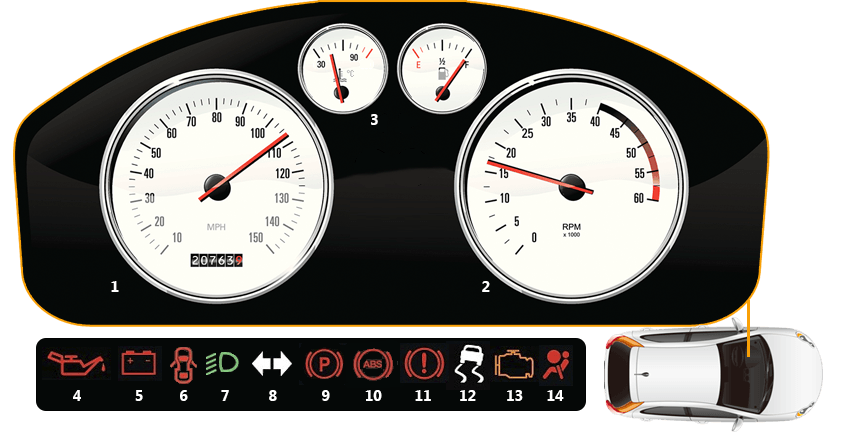
You must be able to read and understand the meaning of the following instruments and control lights:
You must be able to read and understand the meaning of the following instruments and control lights:
(1) Speedometer, (2) optional tachometer and (3) temperature gauge.
(4) Check for oil pressure, (5) electric current, (6) door closure, (7) Light in lights, (8) including indicators, (9) parking brake, (10) ABS brakes, (11) faults in the braking system, (12) ESC, (13) engine light and (14) control lights for airbags.
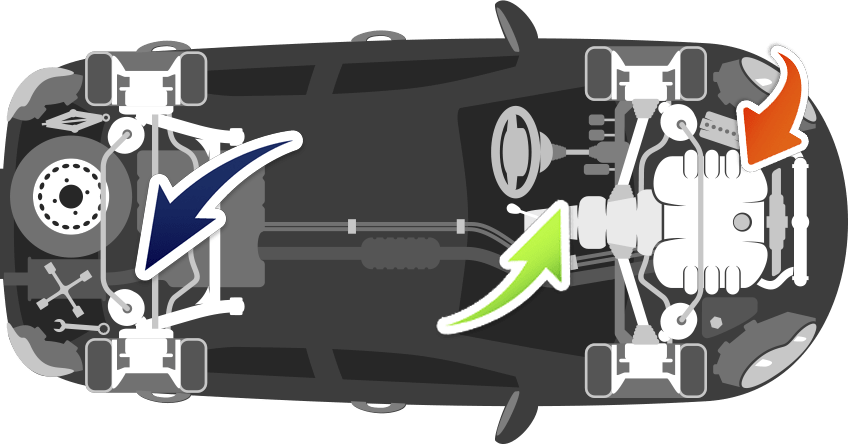
You should be able to identify the following equipment:
You should be able to identify the following equipment:
Switch for steering wheel lock, ignition, electric starter, windscreen wiper and washer, horn, authorised and mandatory lights, heating and ventilation system, electric rear window and mirror adjustment control.
Pedal for clutch, accelerator and brake.
Gear lever, including the position of the gears, parking brake control and steering wheel.
Seat belt attachment points and lock.
Control device for opening the bonnet and filler cap.
Filler cap for engine oil, coolant, sprinkler fluid and possibly power steering oil.
The video is with English subtitles.
